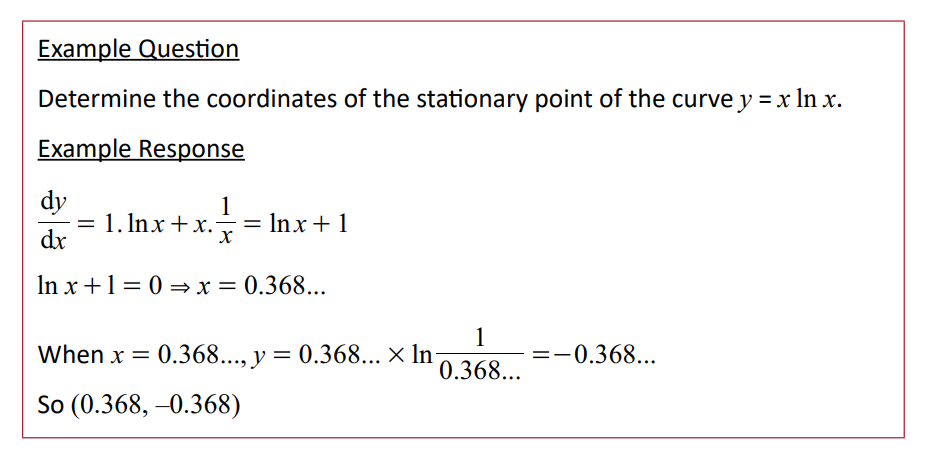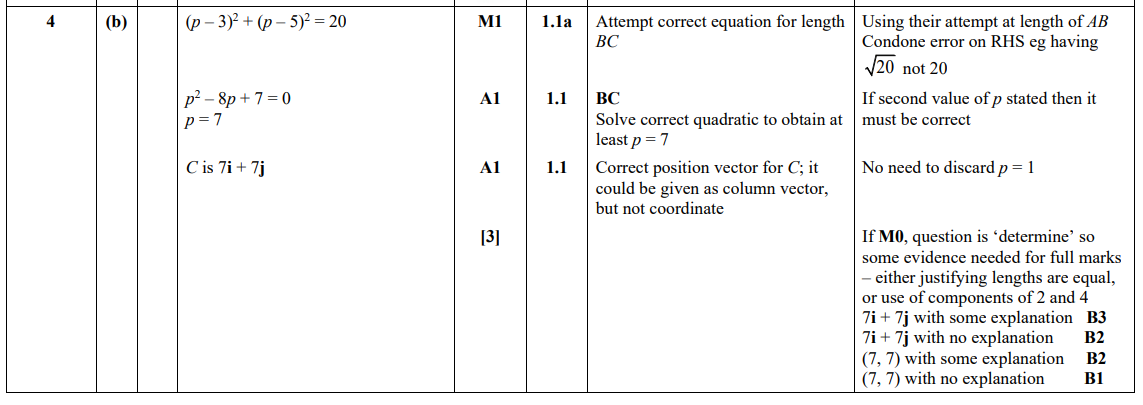A Level Maths: a deep dive into the command word ‘Determine’
28 November 2024
Amy Dai, Maths Subject Advisor

The OCR A Level Maths and Further Maths specifications contain a list of command words along with their respective definitions. These are used throughout the question papers to help signpost students and to provide consistent guidance for what is expected of them when answering questions. In this blog, we will look more closely at the command word “Determine”.
Why Determine?
In the 2024 series, many of the examiners’ reports commented on student responses to “Determine”, and summarised that students who did well on the papers were able to show sufficient methodology and reasoning when the command word required them to do so.
“Determine” is defined by both the Maths A (H240) and Maths B (H640) specifications as:
“This command word indicates that justification should be given for any results found, including working where appropriate.”

As shown in the example, “Determine” questions require some extra communication and explanation versus more straightforward command words, such as “Calculate”. Let’s have a look at some more examples, along with their mark schemes, to pick out the key things to remind your students to do.
Learn from examples
Question 4 H240/01 2023

‘Determine’ is used in part (b) to ensure that students show their methodology in order to justify their answer. In the examiners’ report for this paper, it was noted that some candidates simply looked at their working for part (a) to help them to arrive at the answer of 7i + 7j. Without providing further working, this would not gain full credit. The mark scheme below illustrates how the special case (SC) marks are allocated to responses which did not gain M1.

Students can find explaining and justifying their work difficult in maths, and some can overcompensate and find themselves losing time in the exam writing long sentences. Looking at the mark scheme for this question, it is clear that no extra written explanation is required. A candidate simply needs to show their calculations and how they got to the answer – that is enough to show that they have indeed ‘determined’ their answer.
Question 16 H640/02 2023

In this question, “Determine” has been used to signpost students to show their methodology, as it could simply be answered using a calculator. However, this doesn’t mean a student couldn’t use a calculator to help them answer the question, they just need to remember to write down what they have used the calculator for – whether that is the calculation, or the model they have used (to find probabilities).

As above, there’s no requirement for a long explanation or justification of what the student has done. The ‘Determine’ requirement can be satisfied by writing down their calculation or by clarifying what their model is for finding probabilities on their calculator. Additionally, candidates who get to the correct answer, but don’t show justification are generally still eligible for marks. This can come in the form of SC marks as seen above, or as separate B marks.
Taking ‘Determine’ into the classroom
To help familiarise students with the various command words, we encourage teachers to use them throughout the teaching and learning journey. To help with this, we have produced a command word poster which you can download and print in either A4 or A3, ready to go up in the classroom. This gives you a visual tool to refer to during lessons.
Here are some examples of how to include “Determine” in teaching activities:
- Rewrite an exam question to remove the “Determine” command word. Then ask your students to come up with a model solution for the rewritten question. Show them the mark scheme for the question and discuss if their model solution satisfies the “Determine” command word. If not, ask them what else they need to include.
- Display an exam question which contains the “Determine” command word. Ask your students to come up with a mark scheme for the question, making sure to emphasise how they would evaluate whether or not a solution has justified the answer.
- During the revision process, before they actually work through a past paper, take some time in class to discuss the questions. Break down the different command words for each question – this can be incorporated into wider discussions about content and topic. Also ask them to reflect on how they would approach each question depending on which command word was used.
Stay connected
Share your thoughts in the comments below. Don’t forget to join us for our Teacher Network events. If you have any questions, you can email us at maths@ocr.org.uk, call us on 01223 553998 or message us on X (formerly Twitter) @OCR_Maths. You can also sign up for monthly email updates to receive information about resources and support.
If you are considering teaching any of our qualifications, use our online form to let us know, so that we can help you with more information.
About the author
Amy joined OCR in 2023 after teaching for five years in both state and independent schools. She provides support across all the OCR Maths qualifications, but with a focus on GCSE, A Level Maths and Further Maths. She graduated from the University of York with a degree in Mathematics and Economics before gaining a PGCE in Secondary Mathematics and an MA in Education.
Related blogs